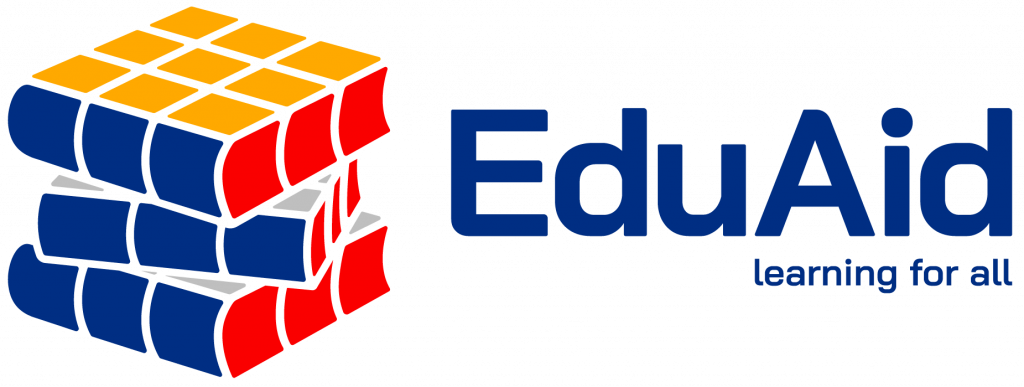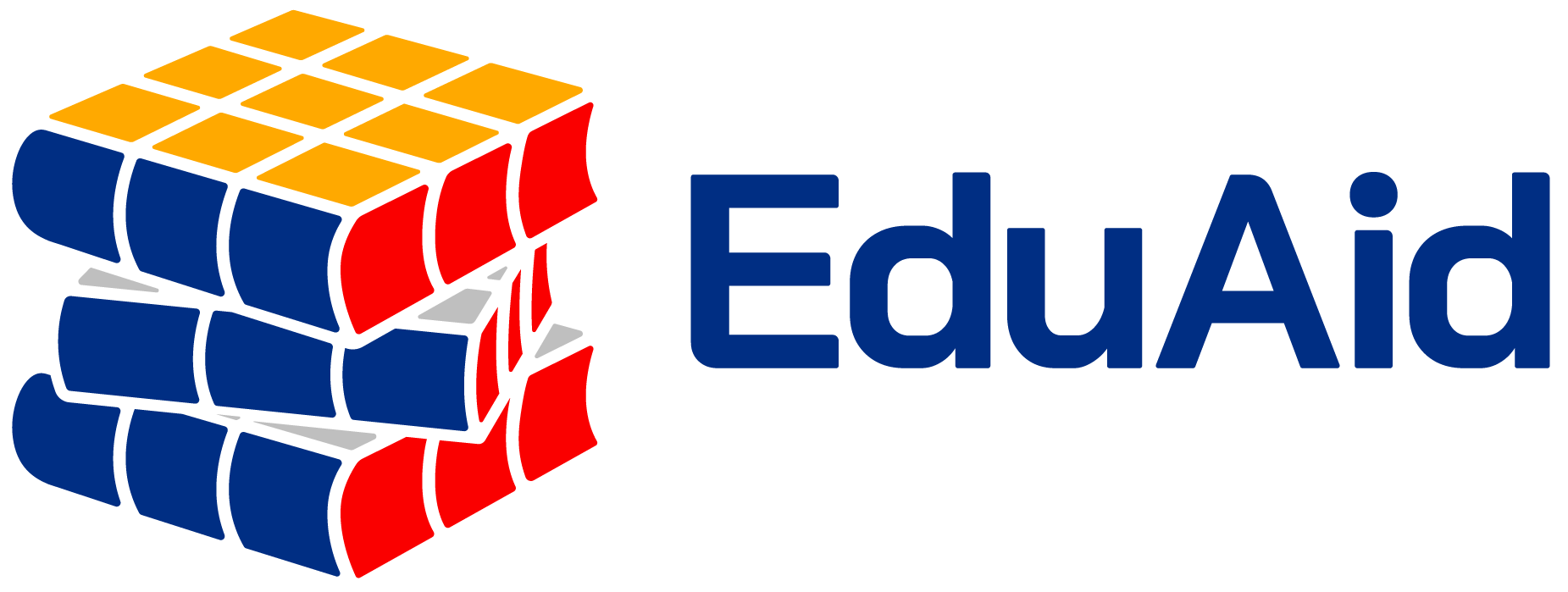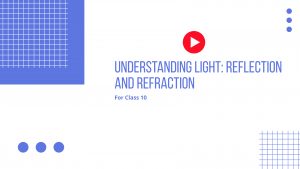NCERT Solutions for Science Class 10 Chapter 3
NCERT Solutions for class-10 Science chapter 3 “Metals and Non-metals” is curated by senior and experienced teachers of EduAid. Before answering the questions of Chapter 3 , read the theory of the chapter multiple times and get a clear understanding of the concepts included in the chapter.
Here are the answers of the questions included in the NCERT book. Before diving deeep into the answers, try to attempt the questions by yourself.
Answer The Following Questions
1. Give an example of metal which
(i) is a liquid at room temperature.
(ii) can be easily cut with knife.
(iii) is best conductor of heat.
(iv) is poor conductor of heat.
Solution :
(i) Mercury
(ii) Sodium
(iii) Silver
(iv) Lead
2. Explain the meaning of malleable and ductile.
Solution : A substance that can be beaten into thin sheets is said to be malleable. For example, iron, copper etc. A substance that can be drawn into wires is called ductile. For example, gold, silver etc.
3. Why is sodium kept immersed in kerosene oil?
Solution : Sodium reacts so vigorously with oxygen that it catches fire when kept in the opens. Hence, to protect accidental fires, it is kept immersed in kerosene oil.
4. Write equation for the reaction of
(i) Iron with steam
(ii) Calcium and potassium with water
Solution :
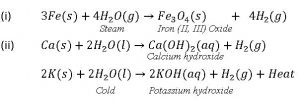
5. Samples of four metals A, B, C and D were taken and added to the following solution one by one. The results obtained have been tabulated as follows :

Use the table given above to answer the f0llowing questions about metals A,B,C and D.
(i) Which is the most reactive metal?
(ii) What would you observe if B is added to a solution of Copper(II) sulphate?
(iii) Arrange the metals A, B,C and D in order of decreasing reactivity.
Solution :
(i) B is the most reactive metal
(ii)If B is added to a solution of copper (II) sulphate, displacement reaction will take place. Blue colour of copper sulphate will fade and red –brown copper will settle down.
(iii) The decreasing order of reactivity is:
B> A> C >D
6. Which gas is produced when dilute hydrochloric acid is added to reactive metal?
Solution : Hydrogen gas is evolved when dilute hydrochloric acid is added to a reactive metal. When iron reacts with dilute \( H_2SO_4\), iron (II) sulphate with the evolution of hydrogen gas is formed.
\(Fe(s) + H_{2}SO_{4(aq)} → FeSO_{4(aq)} + H_{2(g)}\)
7. What would you observe when zinc is added to a solution of iron(II) sulphate? Write the chemical reaction that takes place.
Solution : As zinc is more reactive than iron, displacement reaction will take place
8. (i) Write the electro-dot structures for sodium, oxygen, and magnesium.
(ii) Show the formation of \(Na_2O\) and \(MgO\) by the transfer of electrons.
(iii) What are the ions present in these compounds?
Solution :
(i) Electron-dot structure for sodium, oxygen and magnesium are
(ii) 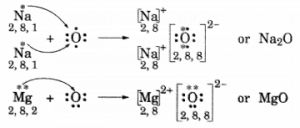
(iii) Ions present in \(Na_2O\) are \(Na+\) and \(O_2-\)
Ions present in \(MgO\) are \(Mg_2+\) and \(O_2-\)
9. Why do ionic compounds have high melting points?
Solution : There are strong forces of attraction between oppositely charged ions in ionic compounds. Considerable amount of energy is required to break strong inter-ionic force of attraction. Therefore, they have high melting points.
10. Define the following terms :
(i) Minerals
(ii) Ores and
(iii) Gangue
Solution :
(i) Minerals- the element or compounds which occur naturally in the earth crest are known as minerals.
(ii) Ores- Minerals from which metal can be extracted profitably and easily are called ores.
(iii) Gangue- Impurities such as soil and sand which are present in the minerals are called gangue.
11. Name two metals which are found in nature in the free state.
Solution : Gold and Platinum
12. What chemical process is used for obtaining a metal from its oxide?
Solution : A metal is obtained from its oxide by the process of reduction.
13. Metallic oxide of zinc, magnesium and copper were heated with following metals :
In which case will you find displacement reactions tking place?
Solution : Based on the activity series of metals, the displacement reactions will take place as below:

14. Which metals do not corrode easily?
Solution : Metals which are placed at the bottom of activity series like silver, gold, platinum do not corrode easily.
15. What are alloys?
Solution : An alloy is homogenous mixture of two or more metals or metal and non-metal. It is obtained by first melting primary metal and then dissolving the other element in it in definite proportion.
16. Which of the following pairs will give displacement reactions?
(a) \(NaCl\) solution and copper metal
(b) \(MgCl_2\) solution and aluminum
(c) \(FeSO_4\) solution and silver metal
(d) \(AgNO_3\) solution and copper
Solution : (d) \(AgNO_3\) solution and copper
17. Which of the following method is suitable for preventing an iron fry pan from rusting?
(a) Applying grease
(b) applying paint
(c) Applying coating of zinc
(d) All of the above
Solution : (c) Applying coating of zinc
18. An element reacts with oxygen to give a compound with a high melting point. This compound is also soluble in water. The element is likely to be
(a) Calcium
(b) Carbon
(c) Silicon
(d) Iron
Solution : (a) Calcium
19. Food cans are coated with tin and not zinc because
(a) Zinc is costlier than tin
(b) Zinc has higher melting point
(c) Zinc is more reactive than tin
(d) Zinc is less reactive than tin
Solution : (c) Zinc is more reactive than tin
20. You are given a hammer, a battery, a bulb, wires and switch.
(a) How could you use them to distinguish between samples of metals and non-metals?
(b) Asses the usefulness of these tests in distinguishing between metals and non-metals?
Solution :
(a) Place the sample on an iron block. Strike with hammer. If the sample takes the shape of a sheet, it is a metal. If it breaks into pieces, it is a non-metal.
Set up the arrangement by using a bulb, a battery, wires and switch. Insert the samples of metals and non-metals in the clips one by one and turn the switch on. If the bulb glows, the sample is a metal, if not, then the sample is non-metal.
(b)The above two methods can, in general, be used to distinguish between metals and non-metals.
21. What are amphoteric oxides? Give two examples of amphoteric oxides.
Solution : Metal oxides which show both acidic as well as basic behavior are called amphoteric oxides. Such metal oxides react with both acids and bases.
Example: Aluminum oxide, zinc oxide
22. Name two metals which will displace hydrogen from dilute acids, and two metals which will not.
Solution : Magnesium and zinc metals displace hydrogen from dilute acids. Copper and silver do not displace hydrogen from dilute acids.
23. In the electrolytic refining of a metal M, what would you take as the anode, the cathode and the electrolyte?
Solution : Impure metal M is made the anode, thin strips of pure metal M as cathode and a salt solution of metal M as electrolyte.
24. Pratyush took Sulpher powder on spatula and heated it. He collected the gas evolved by inverting a test tube over it as shown in fig. 3.12 below :
(a) What will be the action of gas on
(i) Dry litmus paper?
(ii) Moist litmus paper?
(b)Write a balanced chemical equation for the reaction taking place.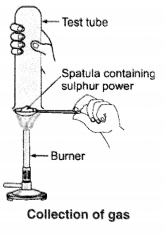
Solution :
(a) Sulphur is a non-metal. Oxides of non-metals are acidic. In this case sulphur dioxide is produced which is acidic.
(i) No action of the gas
(ii) wet litmus paper will turn red.

25. State two ways to prevent the rusting of iron.
Solution : Rusting of iron can be prevented by
(i) By applying grease or paint.
(ii) By galvanizing
26. What types of oxides are formed when non-metals combine with oxygen?
Solution : Acidic oxides are formed when non-metals combine with oxygen.
27. Give reasons :
(a) Platinum, gold and silver are used to make jewellery.
(b) Sodium, potassium and lithium are stored under oil.
(c) Aluminum is highly reactive metal, yet it is used to make utensils for cooking.
(d) Carbonate and sulphides ores are usually converted into oxides during the process of extraction.
Solution :
(a) These metals are un-reactive. They do not react with oxygen and other gases present in air and with moisture. Thus, their shine is maintained. That is why these metals are used to make jewellery.
(b) Reaction of sodium, potassium and lithium with oxygen is so violent that they catch fire. To prevent accidental fire, they are stored under kerosene oil.
(c) This is because aluminum is a good conductor of heat. Aluminum forms a layer of aluminum oxide at high temperature which is prevent the further corrosion.
(d) It is easier to reduce oxide than the carbonates and sulphide to the metals.
28. You must have seen tarnished copper vessels being cleaned with lemon or tamarind juice. Explain why these sour substances are effective in cleaning the vessels.
Solution : Copper, on keeping in air reacts with atmospheric carbon dioxide to form a green layer of copper carbonate. Copper carbonate reacts with citric acid present in lemon or tartaric acid present in tamarind to form soluble copper citrate or copper tartarate. The vessels are thus cleaned using water.
29. Differentiate between metal and non-metal on the basis of their chemical properties.
Solution : Metals and non-metals can be differentiated on the basis of following chemical properties.
30. A man went door to door posing as a goldsmith. He promised to bring back the glitter of the old and dull ornaments. An unsuspecting lady gave a set of gold bangles to him which he dipped in a particular solution. The bangles sparkled like new but their weight was reduced drastically. The lady was upset but after a futile argument the man beat a hasty retreat. Can you play the detective to find out the nature of the solution he had used?
Solution : Aqua regia, which is a mixture of 3 parts concentrated \(HCl\) and part of concentrated nitric acid dissolves gold. The man put the gold bangles in this solution. The outer dirty layer of gold bangles dissolved in aqua regia bring out the shining bangles.
As the outer layer of bangles dissolved in aqua regia, the weight was reduced drastically.
31. Give reasons, why copper is used to make hot water tanks and not steel (an alloy of iron).
Solution : Electrical conductivity of a metal is decreased when it is alloyed with another metal or non-metal. Thus, the electrical conductivity of steel is much less than that of pure. That is why copper is used to make hot water tanks and not steel.
Study materials
- Refernce Books
- NCERT Solutions
- Syllabus
